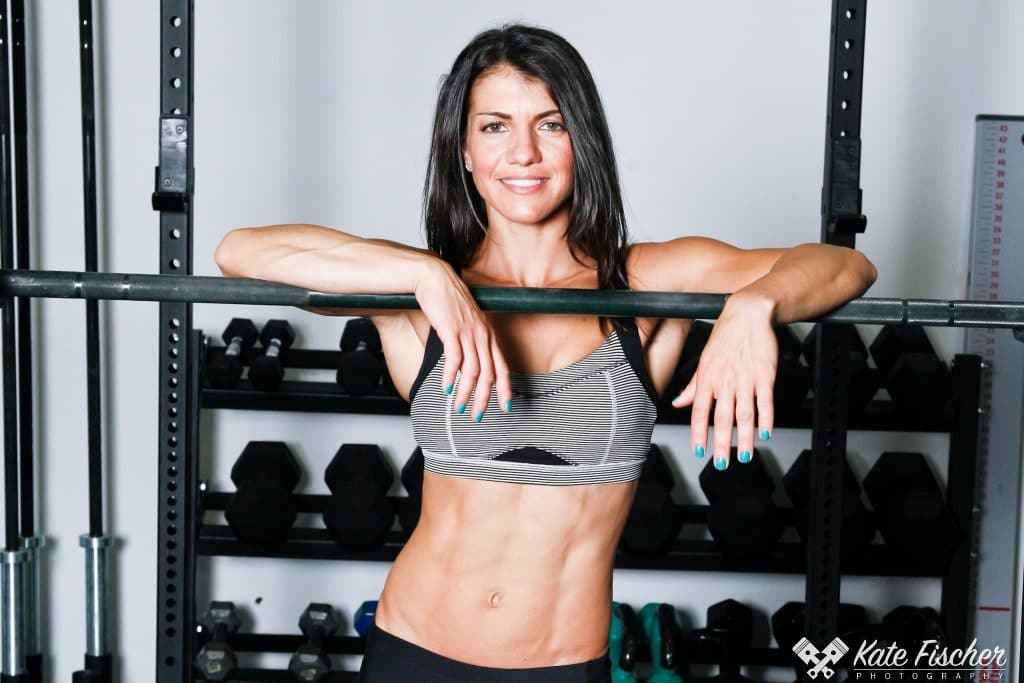Although weightlifting produces some strong and powerful athletes, it is not what we would call a hypertrophic sport. Often, rep ranges are in the lower ranges, at moderate to high intensities, and rarely ever driven to failure. While frequency and overall training volume will increase muscle mass, some athletes may find themselves in need of additional measure to stimulate new muscle tissue growth, increase lean body mass, and improve lagging performance.
Many weightlifting coaches and highly skilled athletes, such as Greg Everett, have experimented and implement supplemental hypertrophy (bodybuilding) splits for athletes in preparation phases who may be in need of gaining lean body mass to climb up a weight class, improve muscle mass in a specific region of the body, and/or correct imbalances.
While the emphasis of a weightlifter should be on the Olympic lifts, squats, pulls, and mobility, integrating bodybuilding training into preparatory training cycles (far out from competition) can help improve overall performance. Coaches and athletes should pay close attention to the changes the body goes through from supplemental bodybuilding routines to ensure it doesn’t impede the overall development, movement patterns, and technique of the formal weightlifting lifts.
In this article we will discuss six benefits of implementing hypertrophy based training into supplementary/assistance workouts.
Develop New Muscle Tissue
In short, hypertrophy is the process in which cells in a muscle enlarge in size (cross-sectional area), often with increased myofascial size as well as increase muscle glycogen storage in nearly all muscle types. When new muscle is developed, some of those muscles have the capacity to be “trained” to become explosive and/or produce higher tensile force, both of which will allow for increase force output over time.
Increase Lean Body Mass
Due to increases in muscle tissue, lean body mass can increase while committing to more hypertrophy based programming. Athletes looking to move up in weight classes and/or women (who often lack upper body muscle mass and strength) may find it beneficial to include more hypertrophy-based training into assistant work to gain lean body mass and allow for long-term strength and power development.
Improve Imbalances
No matter the sport, muscular imbalances leave all athletes susceptible to injury. Targeted training of smaller body parts and/or asymmetrical imbalances (one leg/arm is weaker than the other) can help to increase overall performance and injury resilience, allowing a lifter to continue training to develop maximally over the long-term.
Target Weak Muscle Groups
Hypertrophy training is a great way to increase lean body mass in a specific weak area of a lifter. The ability to target and isolate a specific lagging muscle group can help to increase strength and performance of more complex movements. For example, if a lifter has issues with leg strength or knees buckling in the squat, isolated leg training (such as: lunges, split squats, leg press, and glute bridges) can be used at low-moderate loads for higher repetitions to create an hypertrophic environment to stimulate muscle synthesis.
Recover Faster
The nature of hypertrophy training is to induce muscular fatigue, increase blood flow, and create an anaerobic environment, which in turn stimulate muscle synthesis and growth. Over time, athletes can improve blood flow and bring oxygen-rich blood and nutrients to muscle and connective tissues.
Neuromuscular Patterning and Awareness
Hypertrophy based training, often including unilateral exercises, can increase neuromuscular stimulation of active tissues and improve an athlete’s proprioception and awareness. Additionally, the ability to have an athlete focus on a target muscle group may allow them to contract and find finite control better while performing the formal lifts.
Bodybuilding Basics
- Total Exercises Per Bodypart: 2-4
- Total Sets Per Exercise: 3-5
- Total Reps Per Exercise: 8-15
- Rest Periods: 45-90 seconds
- Tempo: Moderate, controlled and conscious contractions, minimizing momentum.
Below are sample exercises for each muscle group(s).
Legs
- Bulgarian Split Squats
- Lunges
- Step Ups
- Stiff-Leg Deadlifts
- Calve Raises
- Leg Press
- Hack Squat
Back
- Lat Pulldown
- Pullovers
- Dumbbell Rows
- T-Bar Rows
Shoulders, Arms, Chest
- Military Press
- Arnold Press
- Dips
- Pressdowns
- Tricep Extensions
- Chins
- CurlsReverse Curls
- Floor Press
- Flyes
- Bench Press
Abs, Obliques, and Erectors
- Weighted Sit Ups
- Hanging Ab Work
- Woodchoppers
- Weighted Planks
- Side Planks
- Cable Rotations
- Back Extension
- Goodmornings
Final Words
Coaches and athletes can implement the most basic of lifts above and produce measurable results in increase muscle mass and development when an athlete is pairing that will sound recovery and nutrition. As with all movements, technique and form should be stress, and this type of lifting should only be supplementary to the main training program and competition lifts. Stretching and mobility should also be emphasized to maintain movement patterns and positions.
Pro Figure Competitor Stephanie Spiridakis had the following to add about the intersection of hypertrophy and strength training:
My experience as a figure competitor has reinforced my confidence in the benefit of hybridized programming. Hypertrophic training and traditional strength training are synergistic in both directions, and there are droves of well known athletes to serve as anecdotal evidence (Latorya Watts, Nicole Wilkins, Ronnie Coleman, to name just a few). If you’re a strength athlete, no obstacle is worse for training than an injury. I believe no injury prevention is more effective than hypertrophic training, to include isolation work. Aesthetics and strength go hand in hand. Train with this in mind to reap maximum benefits.
Editors note: This article is an op-ed. The views expressed herein are the authors and don’t necessarily reflect the views of BarBend. Claims, assertions, opinions, and quotes have been sourced exclusively by the author.
Featured Image courtesy Stephanie Spiridakis.
